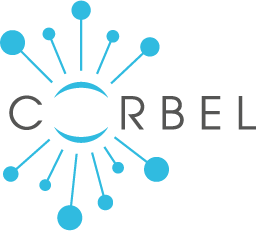EMBRC-Fr - Centre National de Recherche Scientifique (CNRS)
OOB - Banyuls-sur-Mer, France
SBR - Roscoff, France
OOV - Villefranche-sur-Mer, France
General information
The CORBEL project involves three different laboratories: the Laboratoire de Biologie du Développement at the Marine Observatory of Villefranche-sur mer (OOV), the Laboratoire de Biologie Intégrative des Organismes Marins at the Marine Observatory of Banyuls-sur-mer (OOB) and the Marine Station of Roscoff (SBR).
The three marine biology stations of France (OOV, OOB and SBR) are jointly operated by CNRS and Sorbonne Universités (ex UPMC). They together form the French partner of the European Marine Biological Resource Centre (EMBRC), a distributed research infrastructure that aims to provide a strategic delivery mechanism for excellent and large-scale marine science in Europe.
The Observatoire Océanologique de Villefranche-sur-mer (OOV), located on the ligurian coast, offers access to a wide range of marine organisms, especially the unique pelagic fauna and an advanced imaging platform specialised in imaging marine organisms at all scales (part of the regional MICA platform). The Observatoire Océanologique de Banyuls (OOB) is located on the Catalan coast of the north-western Mediterranean Sea. Special emphasis has recently been given to the development of marine biotechnologies mostly for medical, pharmaceutical and cosmetic applications. An imaging platform is available to internal and external users and expertise in molecular biology is present as the platform Bio2Mar. The Station Biologique de Roscoff, located on the Brittany coast, offers extended facilities for the onsite or remote supply of various marine models and expertise is present on site for high through-put analyses, from gene sequences to transcripts and proteins.
In the context of the Open Call of the CORBEL project, EMBRC offers access to marine animal models and different specialised imaging techniques available in the different facilities. The main action of the EMBRC within CORBEL though, is the developpement of a genomic & imaging database for three marine model organisms (Paracentrotus lividus, Clytia haemispherica and Branchiostoma lanceolatum). This database will be open access from the second semester 2018. A possibility would be that during the open call users can get familiar with the animals if they would be interested in working with them once the database is available.
Expertise
Users have access to lab-space, to the marine model animals, various imaging techniques and possible logistic support by the service staff for the different platforms as agreed upon in a user-access contract between user and EMBRC-node. In the context of the CORBEL project access is offered to three marine animal models: Paracentrotus lividus (OOV & SBR), Clytia haemispherica (OOV) and Branchiostoma lanceolatum (OOB).
Technologies offered for the Open Call
- Confocal microscopy (SBR & OOV)
- Full field microscopy (OOV)
- 5D Full field video microscopy (OOV)
- Transmission electron microscopy (OOB & SBR)
- Fluorescence microscopy (OOB & SBR)
- Epifluorescence microscopy (OOB & SBR)
- Transmission light microscopy (OOB)
- Clytia hemisphearica - Hydrozoan jellyfish (OOV)
- Paracentrotus lividus - Sea urchin (OOV & SBR)
- Branchiostoma lanceolatum - Amphioxus (OOB)
Additional resources offered for the Open Call
- Animal preparation
- Animal facilities
- Wet lab space (availability is site-dependend)
- Animal collection
- Technical assistance to run instruments (if previously agreed upon)
- Methodological setup (e.g. design of study protocol and standard operation procedures)
- Housing & restaurant facilities (site-dependend)
Access modalities
On-site, user performs experiment.
Scientific and technical requirements
Planned experiments must be feasible and enough capacity of staff and needed equipment in the envisaged visit period are a prerequisite.
Contacts
General contact: Evelyn Houliston
Scientific contact: Evelyn Houliston
Technical contact: Evelyn Houliston
 shared services for life-science
shared services for life-science